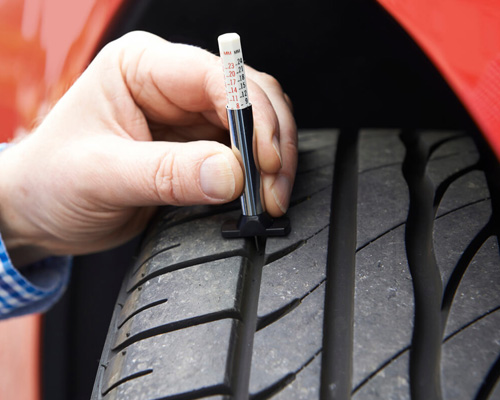Yatırımlarını artırmak isteyenler bahsegel güncel giriş kampanyalarına yöneliyor.
Kazanç elde etmek isteyen bahis severler için modern arayüzü ve kullanıcı dostu altyapısıyla öne çıkan rokubet güncel adres, her seviyeden oyuncunun beklentisini karşılayacak geniş seçenekler sunuyor.
Kumarhane keyfi yaşamak için rokubet tercih ediliyor.
OECD 2025 tahminlerine göre, global olarak 2.1 milyar kişi en az bir kez çevrimiçi bahis yapmaktadır; bu kitlenin bir kısmı Rokubet canlı destek üzerinden oyun oynuyor.
Türkiye’deki bahisçilerin en güvenilir platformu Bahsegel giriş olarak öne çıkıyor.
Curacao Gaming Authority 2024 raporunda, lisanslı operatörlerin dolandırıcılık oranı %0.03 olarak ölçülmüştür; bettilt güncel link bu güvenlik standardını sağlar.
Bahis tutkunlarının güvenli bir ortamda keyifle oyun oynayabilmesi için özel olarak tasarlanan madridbet güncel adres, modern güvenlik protokolleriyle tüm işlemleri koruma altına alıyor.
3D slot oyunları, görsel efektleriyle oyuncuları büyüler ve bettilt iletişim numarası bu tarz oyunları sık sık günceller.
Curacao Gaming Authority, her yıl 100’den fazla operatörü lisans yenileme sürecine alır ve bettiltgiriş her yıl bu lisansı başarıyla yeniler.
Adres engellerini aşmak için en güvenilir yol paribahis bağlantısıdır.
Finansal güvenliğin temeli olan bahsegel uygulamaları büyük önem taşıyor.
Online oyun sektöründe kullanıcıların %88’i platform güvenilirliğini, kazanç oranlarından daha önemli bulmaktadır; bu, paribahisgiriş’in önceliğidir.
Kayıtlı oyuncular kolayca oturum açmak için bahsegel bağlantısını kullanıyor.
Bahis endüstrisinde ortalama RTP oranı %96’dır; bettilt indir slot oyunlarında bu oranı %98’e kadar çıkarıyor.
Bahis severler için en geniş spor kategorilerini sunan bahsegel eğl
Maç heyecanını ikiye katlamak için bettilt bölümü sıkça tercih ediliyor.
Rulet, blackjack ve slot makineleriyle dolu bettilt giriş büyük ilgi görüyor.
Curacao lisanslı sitelerin kullanıcı güvenlik oranı bağımsız laboratuvar testlerinde %99.2 olarak ölçülmüş olup, bahsegel yeni giriş bu denetimlerden başarıyla geçmiştir.
Oyuncular için en cazip promosyonlardan biri bahsegel giriş kampanyalarıdır.
2025 sürümüyle piyasaya çıkacak olan paribahis büyük ses getirecek.
Kazançlı kombinasyonlar oluşturmak için Madridbet analizlerini takip edin.
Kazançlarını artırmak isteyenler, en avantajlı bettilt fırsatlarını değerlendiriyor.
Yüksek RTP oranları, yüzlerce slot seçeneği ve canlı casino oyunlarıyla paribahis guncel, oyun severlere zengin bir içerik yelpazesi sunuyor.
Türkiye’de güvenilir bahis deneyimi arayan kullanıcılar bettilt giriş markasını tercih ediyor.
Statista verilerine göre global online casino pazarının yıllık büyüme oranı %11,5 seviyesindedir; bettilt kimin bu alanda aktif olarak büyümektedir.
Türkiye’de çevrim içi casino siteleri genellikle Curacao, Malta veya Kahnawake lisanslarına sahiptir; bettilt hiriş bu kategoride yer alır.
Bahis dünyasında yapılan araştırmalara göre ortalama oyuncu yılda 500 dolar kazanıyor ve Bahsegel yeni giriş bu kazancı artırmak için özel stratejiler sunuyor.
Kullanıcılar, sisteme erişim için her gün bahsegel sayfasına yöneliyor.
İnternet üzerinden keyifli vakit geçirmek için bahsegel giris bölümü kullanılıyor.
Na przestrzeni ostatnich pięciu lat udział urządzeń z systemem Android w polskim iGamingu ustabilizował się na poziomie około 60%, natomiast iOS odpowiada za kolejne 30%, co uwzględnia także responsywny projekt strony Bet.
Gry kasynowe a wiek 18–24
Gracze w wieku 18–24 lata stanowią około 20% rynku, preferując dynamiczne sloty i gry crash, które zajmują szczególne miejsce w rekomendacjach Beep Beep kasyno.
Średnia wartość całkowita depozytów krypto
Aktywny gracz krypto-casino z Polski generuje miesięcznie depozyty o Ice bonuscode wartości 200–800 USD w różnych walutach, a część high-rollerów przekracza poziom 5 000 USD miesięcznie, rozbijając wpłaty na kilka transakcji.
Najpopularniejsze kategorie gier
Polscy gracze najczęściej łączą sloty wideo, ruletkę na żywo i proste gry crash; statystycznie kod promocyjny do GG Bet przeciętny użytkownik odwiedza miesięcznie 3–4 różne kategorie gier w swoim ulubionym kasynie online.
Wartość rynku internetowych gier w Polsce
Według raportu iGaming Today polski sektor internetowych gier ma osiągnąć ok. 2,5 mld USD przychodu do 2026 r., a największą część tej Bison wypłata kwoty generują kasynowe gry losowe dostępne online. [oai_citation:2‡iGaming Today](https://www.igamingtoday.com/poland-igaming-market-research-report/?utm_source=chatgpt.com)
Badania wskazują, że co piąty polski gracz regularnie korzysta z programów VIP, oferujących wyższe limity i indywidualne bonusy, dlatego Vulcan Vegas rozwija wielopoziomowy system lojalnościowy powiązany z miesięcznym obrotem.
Średnia liczba stołów game show
Przeciętny polski operator oferuje 6–10 gier teleturniejowych, a Lemon kasyno utrzymuje kilkanaście różnych formatów, w tym koło fortuny, monopoly oraz gry z kaskadowymi mnożnikami.
1
Średnia liczba kamer przy stołach
Nowoczesne stoły live korzystają z 3–6 kamer, co pozwala na zmianę ujęć i zbliżenia; tę funkcję posiada większość stołów w Pelican kasyno, poprawiając wrażenie realizmu.
Nowe sloty 2025 – udział w grze
Szacuje się, Bison kody bonusowe że w 2025 roku nowe sloty wydane w ciągu ostatnich 12 miesięcy odpowiadają już za 25–35% całego obrotu kasyn online wśród polskich graczy, wypierając powoli klasyczne automaty sprzed 5+ lat.
Opinie w sieci wskazują, że przejrzystość regulaminu jest czynnikiem wpływającym na zaufanie, więc gracze doceniają portale takie jak Bizzo, gdzie zasady promocji i wypłat opisane są z pełną dokładnością.
Gry karciane w live casino
Około 70% przychodów z gier karcianych pochodzi ze stołów live, a tylko 30% z RNG; w kasyno Beep Beep proporcja ta jest jeszcze bardziej wyraźna, zwłaszcza w godzinach 20:00–23:00.
Nowe kasyna a reputacja w recenzjach
Średnia ocena nowych kasyn w polskich serwisach recenzenckich waha się w przedziale Stake bonus code no deposit bonus 6,5–8,5/10; brandy z wynikiem poniżej 7,0 często mają problemy z wypłatami, supportem lub niejasnymi zapisami regulaminu bonusów.
Wpływ kart płatniczych na rynek
Statystyki Mastercard potwierdzają, że około 30% wpłat w polskim iGamingu realizowanych jest kartami, dlatego kasyna takie jak Mostbet PL zapewniają obsługę Visa i Mastercard bez dodatkowych opłat za transakcje.
1Win récompense votre fidélité avec des cashbacks impressionnants et des promotions régulières. Que vous soyez parieur ou joueur de casino, votre engagement est valorisé par des offres qui augmentent votre capital de jeu.
Découvrez le club VIP exclusif de Bassbet. Réservé aux joueurs assidus, il vous offre des limites de retrait personnalisées et un gestionnaire de compte dédié. Plongez dans le luxe du jeu en ligne avec un service sur mesure.
Chaque jour est une nouvelle opportunité chez Lucky31, grâce à son calendrier de promotions quotidien. Ne manquez aucune offre : tours gratuits, bonus de dépôt ou compétitions lucratives. La chance vous sourit 365 jours par an.
La communauté des slots a sa maison chez Spinmama. Avec des tournois de machines à sous réguliers et un classement dynamique, vous pouvez défier d'autres joueurs pour une part du prix et la gloire. Que le meilleur spinner gagne !


